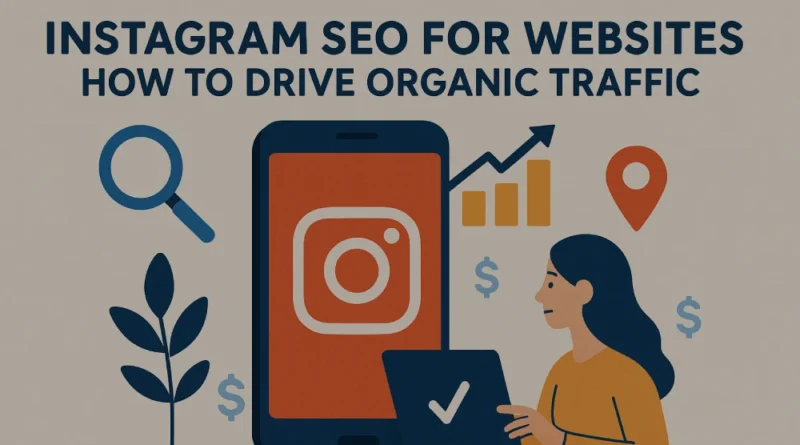Instagram SEO for Websites: How to Drive Organic Traffic
Instagram is not just about likes and followers anymore—it’s a powerful SEO tool to drive real traffic to your website. As search engines begin indexing Instagram content, smart brands are using Instagram SEO strategies to rank higher on Google and attract targeted visitors.
Here’s how to make your Instagram work for your website in 2025:
1. Instagram Profile Optimization for Search
Google now shows Instagram profiles in search results. This means your username, name field, and bio should include your target keywords.
Tips:
- Use a keyword in your username or @handle (e.g., @eco_skincarestore).
- Include your primary keyword in the Name field (e.g., “Natural Skincare | Organic Beauty”).
- Add a strong CTA with a website link in your bio.
2. Use SEO-Friendly Captions
Instagram captions can now be picked up by Google, especially if they’re used in popular or embedded posts.
Best practices:
- Begin captions with a target keyword.
- Write full-sentence descriptions with semantic keywords.
- Keep it natural and avoid keyword stuffing.
Example:
“Looking for affordable website design services? Here are 5 tips to build a high-converting business site in 2025.”
3. Leverage Instagram Alt Text
Instagram allows you to add custom alt text to describe your photos—this is key for both accessibility and SEO.
How to add:
- Before posting, go to Advanced Settings > Write Alt Text.
- Add a short, keyword-rich description like: “Minimalist website homepage for an eCommerce skincare brand.”
4. Post Content That Links Back to Blogs
Instagram can serve as a content teaser to your blog posts. Every time you post a new blog:
- Create a visual summary for a carousel or Reel.
- Link the blog in bio or use tools like Linkin.bio or Linktree.
- Use a clear CTA like “Read full article on our site – link in bio.”
5. Get Featured on Google via Instagram Embeds
If you embed Instagram posts into your website blogs, they can help both the post and your blog show up in search. This increases engagement and dwell time, which helps your overall SEO.
Final Thoughts
Instagram SEO is no longer optional if you want to dominate in both social and search. By optimizing your Instagram content for Google, you not only build your brand on the app—you also boost your website visibility organically.
Start by refining your profile, writing smarter captions, and integrating your posts with website content. The results will follow.
Disclaimer
The information presented in this blog is derived from publicly available sources for general use, including any cited references. While we strive to mention credible sources whenever possible, A web design company does not guarantee the accuracy of the information provided in any way. This article is intended solely for general informational purposes. It should be understood that it does not constitute legal advice and does not aim to serve as such. If any individual(s) make decisions based on the information in this article without verifying the facts, we explicitly reject any liability that may arise as a result. We recommend that readers seek separate guidance regarding any specific information provided here.

